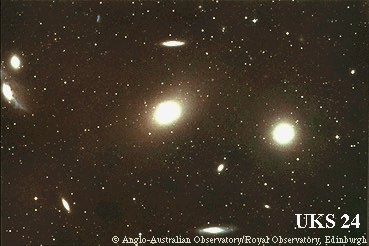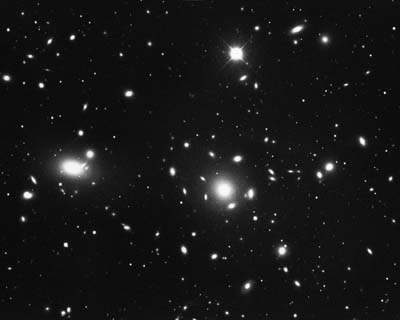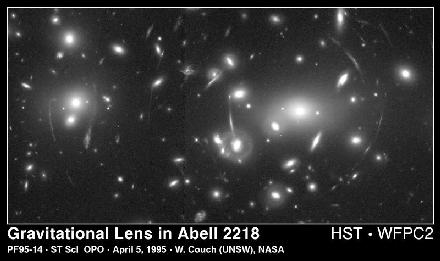In a cluster the main force is the gravitational pull of the galaxies on one another which gives rise to their velocities. By knowing the velocities of the galaxies the total mass of the cluster can be determined.
If your web browser is Java-aware -- e.g., Netscape 2.0b or higher, try this experiment. It allows you to vary the mass inside a galaxy cluster, and watch the individual galaxies.
Experiment I
(
Courtesy of John's Homepage http://www.astro.queensu.ca/~dursi/dm-tutorial/dm1.html)
Now like all observations there is a certain amount of error involved. In this case, watching the galaxies in a cluster takes years of observation and the velocities are hard to determine due to the expanse of the cluster. It’s not like the experiment were the dots are whizzing around. Also some of the galaxies measured may not be in the cluster but are just in the line of site of the telescope. So even as strong as this evidence seemed to appear it was mostly ignored due to the errors of the observation.






